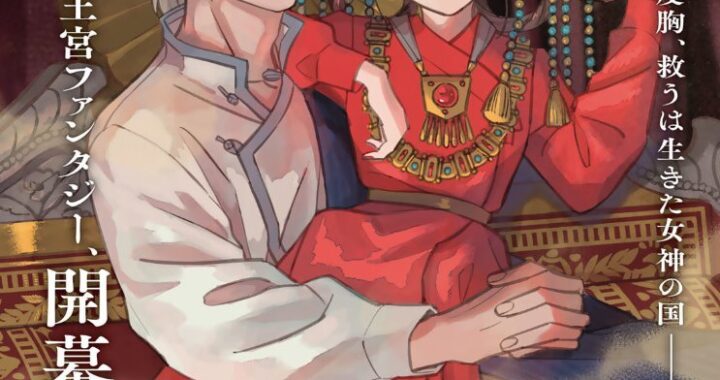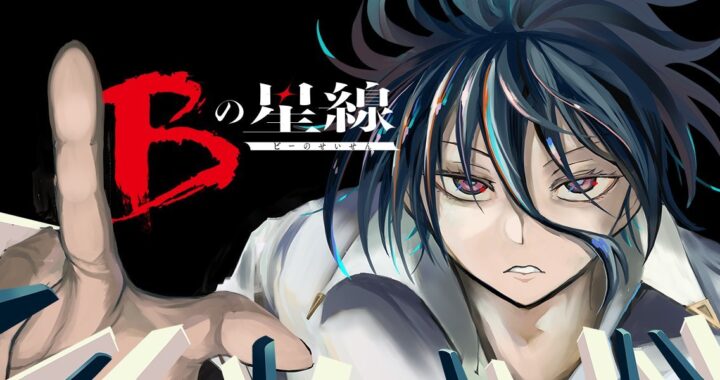 To have any chance against a powerful enemy mankind will have rely on a small number of 14 yr old children and a secret weapon to avoid extinction- but when the enemy is an Angel does mankind stand a chance?
To have any chance against a powerful enemy mankind will have rely on a small number of 14 yr old children and a secret weapon to avoid extinction- but when the enemy is an Angel does mankind stand a chance?
Creative Staff
Story/Art: Yoshiyuki Sadamoto
Translation/Adaptation: Mari Morimoto, Lillian Olsen, William Flanagan, David Ury/Fred Burke, Carl Gustav Horn
What They Say
Once Shinji didn’t care about anything; then he found people to fight for – only to learn that he couldn’t protect them, or keep those he let into his heart from going away. As mankind tilts on the brink of the apocalyptic Third Impact, human feelings are fault lines leading to destruction and just maybe, redemption and rebirth.
Technical
The Evangelion manga has seen a number of releases from Viz over the many years that they have licensed the title from flipped (panels reversed and laid out in the traditional Western left to right) comic singles to collections available in both a flipped collection as well as unflipped “Collector’s Versions” before being released in the more currently standard size beginning in 2004, but as anyone trying to get the volumes now can tell you some of those volumes are difficult to impossible to find and generally have an asking price equivalent to that rarity. Viz alleviates that search somewhat now in larger sized book (about the dimensions of a soft cover novel or hardcover book’s actual pages) that may serve as the definitive collection of the manga materials to date.
Besides the size the biggest difference in the book is found in comparing the paper used (at least in the volumes available for comparison) as the 2004 version uses a bit of a rough and rather gray type paper for its pages while this new release uses a very white and smooth paper for both better and worse. On the better end this paper type allows the ink to absolutely “pop out” and it helps add a dynamic touch to a number of scenes when compared to the older and smaller version and it makes the differences between the inks used stand out even more when it is set against this white page as this new version looks much richer and deeper. The downside to this however is that on many occasions the ink from the other side of the page can be seen bleeding through when the art on the current page makes use of some white spaces for effect and it can be a touch distracting to see these “ghost” images from another page interrupting the artwork on the current page.
In addition Viz has an added bonus the previous release did not in that they included 4 color pages to coincide with each of the volumes included as well as the color images originally used for the 2004 era releases covers of the three volumes held within and on top of that a two page color splash exists that wasn’t present in the original release. Beyond that most of the pages look roughly the same as the volumes though the bio page/end note page for Sadamoto gets changed with a black backdrop rather than a pattern and some of the bonus artwork designs present for the interview pages that were previously available get a bit of a redesign and re-format as well.
The cover is incredibly slick and eye-catching with its heavy use of purple to coincide with the Eva-01’s color scheme and the Eva-01 is present in berserk mode in the middle of the cover while Shinji is shown in the entry plug seat has an intense look on his face at the lower portion of the cover. In addition to carrying the purple color scheme the spine also has a pair of neon-green bars that help the cover catch attention while keeping with the Eva-01 theme perfectly. The title itself is present in white that jumps off the purple background while the pinkish-purple coloring for the author’s name is more subdued and the gray color indicating which volumes are included works to show the contents without being garish while a “headshot” of the first Angel encountered appears at the bottom of the spine in roughly the same color as is used to list the author. The top 1/3 of the back cover uses a close up shot of the head of the EVA-01 colored purple and gray with the hexagon lines of the AT Field being present in yellow that turn red when it crosses some of the Eva’s purple lines while the bottom 2/3 uses a gray color and mixes in some of the computer hexagon symbols on the side while the copy is presented in the center of the cover in white.
For many series the artwork changes from the anime series to manga but in the case of Evangelion the original character designer is also the author/artist for this interpretation which means that the vast majority of the images seen in the manga look like they could have, and at times may have, stepped straight out of the anime series which means that fans of either product will find the other to be quite familiar, at least on the surface. Given the lack of motion that manga lacks though Sadamoto had to carefully select the perfect way to display characters and other items on screen to convey the impact of the panel and he proves to be just as adapt at this as he was in creating the designs as his panels almost always show a deft touch that can quickly capture some of the odder comedic moments as easily as he places characters and mech into motion that conveys a feeling of speed and size with seeming ease.
For this release of Evangelion the material largely sticks to the translations used in the 2004 re-release which chose to put names in the Western conventions and honorifics are dropped but that the sound effects that are present in katakana and often worked into the artwork are left alone and to compensate for this there is a glossary at the back of the book that lists the effects in both their onomatopoeia representation along with a English equivalent listed afterword. Beyond that the translation reads well if at times a bit stiff for some reason, perhaps due to the comparisons to how the lines are written versus the life that the voice cast brought to their roles.
Content: (please note that content portions of review may contain spoilers):
Neon Genesis Evangelion is one of the titles that has made such a significant impact on the field of anime to the point that even casual fans have at the very least heard of the title now almost 17 years after it first aired (making the series older than its protagonists) and almost certainly they have seen something the series influenced- to say nothing of the absolute deluge of products that Japan continues to churn out so many years after the series initial run. Currently the property is enjoying a bit of a renaissance (though the fact it never really went away makes it less than the most apt term) as the studio behind the series, Gainax, is in the midst of producing a new feature film series that is retelling and doing some reimagining of the popular series.
This Omnibus release of the manga series collects Yoshiyuki Sadamoto’s interpretation of the series as his role as part of Gainax during the creation of the anime series (as well as having been a founding member of the studio and the character designer for Eva) perhaps lends an extra bit of credibility to his work. In adapting the seminal work the material presented in this early collection is fairly faithful, though Sadamoto admits to having simplified things in places given the density of the material as presented in the anime. There are also some changes that appear here when compared to the anime, mostly minor in their impact in this early part, that eventually will lead to some greater changes down the road so that even though those who know the anime Eva front and back will find new wrinkles as the cast has the chance to experience some new challenges with different responses possible.
The story itself begins in the year 2015 as humanity suffered a terrible calamity in the year 2000 referred to as “Second Impact” that wiped out about half of humanity and left many of its greatest cities, including the original Tokyo, in ruin. Humanity though refused to go quietly into the good night and it has managed to rebuild a good deal of its former glory including in Japan the creation of a brand new city with some impressive hidden features known as Tokyo-3. In this universe a 14 year old boy named Shinji Ikari is summoned to the city by his estranged father and he hopes that the event will lead to some sort of acknowledgement from the parent of his life which he has never really gotten and whom he hasn’t seen since being sent to live with relatives shortly after his mother died.
Unfortunately for Shinji the part of him that suspected he was being summoned not for a reunion but because his father has need of him turns out to be accurate and Shinji discovers a terrible secret that lies behind the veneer of a peaceful world when he arrives in Tokyo-3 in the midst of an assault by a bizarre behemoth that the army seems impotent to stop. Just as the chaos is about to surround him the car driven by Misato Katsuragi who was sent to meet him arrives and the two attempt to make their escape but the concussive blast of a missile puts the car on its roof and the two get out as the shape of the now jumping behemoth looks to land upon them. Through some fortuitous timing they are saved by the appearance of a second giant that first tackles the original behemoth, knocking it off course, before turning the car back over as a stunned Shinji attempts to grasp that the second giant isn’t an enemy. Eventually the army uses its most powerful bomb on the behemoth which doesn’t kill it but stops it for a period of time allowing for the pair to make their escape.
As the behemoth recovers from its wounds Shinji and Misato arrive at the place where Shinji’s father works- an instillation located underground that is home to a branch of the UN known as NERV which has created the giant that saved Shinji known as Evangelions and which were designed to fight creatures like the behemoth which auspiciously are called Angels. It turns out that NERV had known for some time that the Angels were coming and so they had done their best to set up a defense but that they had hit a bit of a snag in that their ultimate weapons are incredibly sensitive when it comes to pilots and the one they had been counting on most, the quiet Rei Ayanami, had been badly injured not long before leaving NERV in dire straits with the Angel’s appearance as she couldn’t operate the first production model Evangelion to its maximum. Shinji’s father Gendo had anticipated this however and it turns out that that was the reason that Shinji had been summoned- in order to board the giant mech and do battle in the place of the injured pilot. When confronted with this hard truth Shinji attempts to rebel but upon seeing the condition of Rei he agrees to board the mech- a situation that turns out to be both better and worse than anyone feared as he proves to be remarkably adapt at controlling it but when things turn dire a much darker truth peers out when the robot goes berserk hinting that there may be more here than meets the eye when it comes to this giant.
Suddenly burdened with tremendous responsibility the young boy is going to have to come to a lot of decisions in a short time regarding the path of his life and the various dangers its future might hold. To do so Shinji is going to have to decide if he is going to confront himself and the psychological defense mechanisms that he has constructed in order to try to get through his life with as little pain as possible while recognizing to an extent the toll this was taking on him while struggling to deal with the expectations now being placed on him by others and his desire for fatherly recognition or if he is content to simply run away from the situation altogether. With the world on the line this 14 year old boy is being asked to grow up really fast and his success at this may spell the difference between survival and defeat for all of mankind- but is it possible that somewhere in the shadows some deeper plot is moving that will forever alter mankind? With a seeming army of Angels against them will these few members of NERV be humanities only hope- and if their enemies are Angels, what does that say about who might have sent them and for what purpose?
Going by this collection it might be hard for an average person experiencing the title for the first time to see right off the bat what it is that has turned Evangelion into such a flashpoint of opinion within fandom as a good deal of the material here isn’t exactly unique with a number of the themes having been used in other series before and since (though some of since is possibly in reaction to the series popularity). There are a few spots in the materials that give a hint that things may be connected to something deeper, most prominently in the choice of “Angel” as the term for the enemies that are attacking and another scene that adds in a Christian symbol that sets up the possibility that the series may be exploring a religious aspect but a good deal of the material is not unlike what one might find in a number of other series that deal with giant robots. One of the things that made Evangelion a bit unique was its use of some at times absurd humor including some manga inspired reactions that broke up the tension a bit when juxtaposed against its very sharp and technical designs and jargon that created a very serious atmosphere throughout much of the work.
But the story of Evangelion is at least as much about Shinji as the role he has been thrust into of needing to become mankind’s (reluctant) savior and so the material spends a fair amount of time dealing with his personality and the views that he has of himself of being a surplus person with no real worth and who is looking for any sign of acceptance from his cold and distant father. It is probably in this area that the fan reaction to Shinji has been most divisive as it has left a number of people greatly dissatisfied with him but those paying close attention will notice a few places in these early volumes that suggest this Shinji isn’t going to go down the exact same path as the anime version so even those familiar with the series can look forward to some surprises. What is really present here in this early collection of volumes is mostly the set up portion of the story that establishes some of the characters, locals and events which will be played with -perhaps almost maliciously- later as the reader discovers just how deep the series attempts to go.
In Summary
Evangelion is one of the most famous, or perhaps infamous, tales to have come out of Japan’s anime market in quite some time and the manga adaptation from one of the creators behind the series will present both some familiar and unfamiliar scenes to those who have become accustom to the anime version though one need not be an existing fan to get some enjoyment out of this release as it is written as a story of its own. With its dynamic artwork the manga makes up for the loss of motion that the anime brings as this adaption finds its own way quickly and as powerfully and it presents some stunning moments as it introduces its characters and establishes a normal for them before the story gets to pulling the rug out from under them. The improvements made for this omnibus release compared to earlier manga releases makes this version as close to a definitive edition as has appeared on the US market and even fans of previous work will find it worth picking up.
Content Grade: B
Art Grade: A
Packaging Grade: A
Text/Translation Grade: B
Age Rating: 16+
Released By: Viz Media
Release Date: November 13th, 2012
MSRP: $19.99




